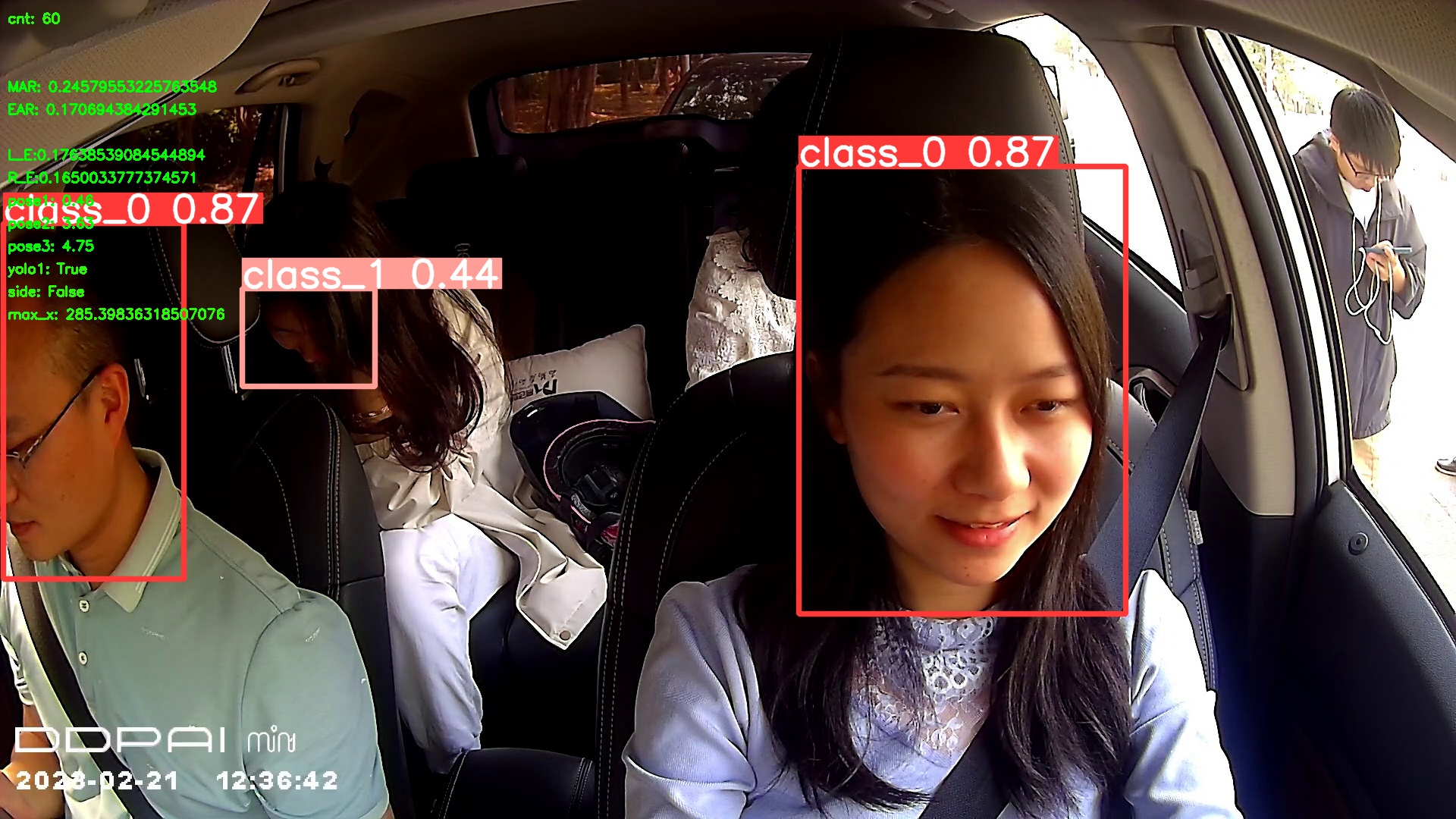Project for the Challenge Cup 2023 Huawei Industrial Contest: Fatigue Driving Detection
Knowledge stacks involved include: Face detection, Facial keypoint recognition, Sequential judgement.
For the key models, we've tried the following:
-
YOLOv5 + Dlib
-
YOLOv5 + SPIGA
-
YOLOv7 + SPIGA
-
YOLOv7 + Renita (baseline)
-
YOLOv8 + SPIGA
-
YOLOv8 + Renita (last submit)
-
The YOLOv5s model is slightly inferior to YOLOv8n in terms of both accuracy and speed.
-
The YOLOv7 model has a training time several times longer than a similar parameter model of v8.
-
SPIGA is a SOTA model for facial keypoint detection, but obviously, the SOTA is the accuracy on large datasets, not accuracy/performance. Its average inference speed per frame on the official required hardware (an old 2-core 8GB cpu) reached an astonishing 1.404s per frame(*😓). It was eventually eliminated due to its poor edge deployment capability.
Just so you know, at 640 x 640
YOLOv8: 230ms per frame
Renita: 56ms per frame
- Renita is a model reference provided by the official Baseline, and is the model we finally chose. This model performs well in a car interior environment where the occlusion and lighting conditions are not complicated.
BaselineLandmark/detectionx.2: Our final bow
submit/detection8: The last act of YOLOv8 + SPIGA
BaselineLandmark/makeup: Our backstage pass for tweaking Retina + YOLOv8
Why does the main code look like a huge pile? Don't we do any encapsulation?
- Our main program, in a bid to stick close to the baseline submission format and make tuning easier, stayed away from encapsulation. Even though it looked similar to the baseline, the main program was written without any peeking at it, which gave the person who started porting quite a headache.
- And with this whole project being a solo gig and a linear job, everyone knew their roles inside out, so there was no need to worry about others not getting it. Everyone simply didn't have the time or energy
and let's be honest, nobody was reading it except me.
The best way to divide the work? One person covers all bases.
How'd we fare in the competition?
The competition judged us on F1-Score (accuracy) and speed. On the facial keypoint front, by pulling in sequential pattern recognition, we managed to cover all bases. Top 50 now!
Any hurdles during the competition?
- The size of the dataset was a beast (2066 * 8s video sequences)
- Doc of Huawei Cloud ModelArts' online deployment feature (which we had to use for submission) was as clear as mud - practically nothing was there. We had to play detective and figure out how it works before we could make a stable submission 😓.

